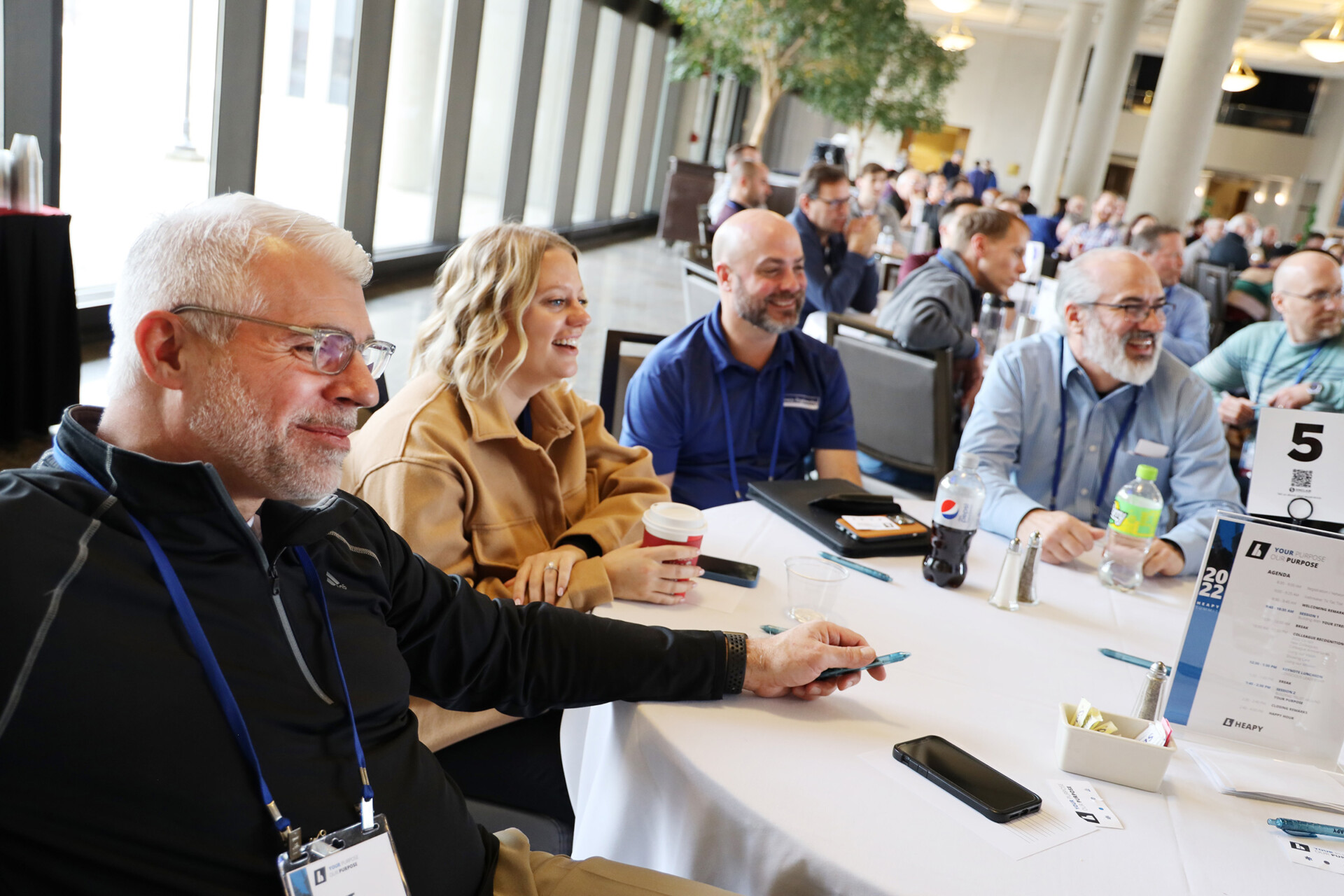While you’ve been focused on managing your organization, a major change in electricity pricing has been brewing that could dramatically impact your budget. Starting June 1st, demand charges across Ohio and surrounding states are increasing by unprecedented amounts—and most decision-makers have no idea it’s coming. This creates an urgent need for facility owners to understand and act on their energy usage patterns.
HEAPY’s energy team is uniquely positioned to help businesses navigate this critical challenge. Our experts combine deep technical knowledge with practical, real-world experience in energy system optimization and implementation. Merritt Roseberry, Senior Construction Project Manager and Associate Principal, brings extensive expertise in energy system design and construction solutions, while Joe Jancauskas, PE, NABCEP Solar Certified Energy Transition Specialist, offers invaluable insight into grid operations and energy market dynamics. Together, they represent our comprehensive approach to energy management—from operational assessments and building optimization to engineered solutions and full-service implementation.
Below, Merritt and Joe address the most pressing questions about demand charge increases and what facility owners need to know to protect their operations and budgets.
Q: For businesses that haven’t been paying attention to demand charges, why is now a good time to start caring about this issue?
Merritt: Your electric bill is made up of two sections: your demand and your actual usage. We’ve been notified by PJM—the grid operator covering Ohio and surrounding states—that as of June 1st, demand rates are increasing by a substantial margin.
Joe: While electricity costs are rising everywhere due to increased usage and infrastructure needs, PJM rates went up by a factor of 10, making this a significant step change for businesses in our region.
Q: Are there particular industries or facility types that will be affected more than others?
Merritt: This affects everyone’s bill, all the way down to residential. However, facilities that have usage spikes—peaking in the middle of the day or having individual equipment surges—will be affected more proportionally. The goal is to flatten out your usage curve so you’re keeping demand even throughout the day and year.
Q: What operational changes can businesses make to manage these increases?
Merritt: We have a whole group that assesses buildings and helps flatten demand curves. Changes can be as simple as having morning warm-up start earlier and ramp up gradually versus an instantaneous hit. Most facilities reduce their set points during off-peak hours to let buildings get colder or warmer, then tighten them when occupants return. Operations may need different shifts to spread out the load, and equipment maintenance should avoid ramping all pumps or chillers simultaneously.
Joe: My favorite example was a school with high demand charges they couldn’t figure out. Once they started measuring, they discovered the home economics teacher hit self-clean on all the ovens at the end of Friday and left. That 15-minute peak set their demand charge for the entire year.
Q: Should businesses focus on quick operational fixes or longer-term investments?
Merritt: Start with operational changes—most can be done with little to no cost and are mainly programming adjustments. For construction solutions, we can get battery systems in three months, but engines can take up to two years. It depends on how much you want to invest and how much you’re willing to invest to minimize that impact to your bill.
Joe: The first step is raising awareness of how you’re using electricity. Organizations need to ask themselves “How am I using electricity now? What are the options?” Most business owners are coming in blind—it’s just a budget item until suddenly they’re over budget asking “what happened?” Understanding your usage starts the discussion of whether you need operational changes or actual investments. Our team can help guide those discussions.
Q: For someone who sees this information and wants to act, what’s the typical timeline for implementation and ROI?
Merritt: We start with an assessment since the specifics depend entirely on your facility. But timing is critical here – it’s simple supply and demand. If you’re late to the game once this information gets out, those lead times are going to get longer and costs will keep going up.
Even with a three-month equipment delivery window, you’re looking at five to six months minimum before the system is operational, and that’s moving at a fast pace. Realistically, expect longer timelines. Given the upcoming changes, most facilities should plan to be positioned for the following year’s rate structure. You’ll typically see major ROI impacts within about a year of full implementation.
Q: What are the biggest misconceptions about demand charges and energy management?
Joe: People don’t understand how their electric bill is structured. The demand charge exists because utilities need power plant capacity for your highest usage—15 minutes out of the year sets your demand charge for 365 days.
The biggest misconception is thinking renewables such as solar panels will reduce demand charges. For example, solar generally doesn’t help unless you have batteries, because your peak will be set on some afternoon in June, July, or August when the grid’s at maximum demand. If it’s cloudy for 15 minutes during the hottest hour, you’ve lost the benefit.
Merritt: Most people simply don’t know their peak usage has such a massive impact on their utility expenses.
Q: Beyond cost savings, what other business benefits come from energy management solutions?
Merritt: Resiliency is becoming key. With manufacturing anticipated to return to the US and data center loads increasing, constructed solutions provide backup power during outages. For example, during recent hurricanes in North Carolina, businesses with battery storage and solar could continue operating.
Joe: Once you understand and manage electricity use, you’re building resiliency. As a business owner, nobody’s coming to rescue you during power outages—not the government, not FEMA. Utilities will get to you when they can. You need to plan for when bad things happen and be able to continue your business.
In addition, electrification gives you flexibility. For instance, in Ohio and several states, it’s a deregulated market. which means you can shop for a supplier—you’re not locked into only one.
Q: What makes HEAPY unique in addressing these challenges?
Joe: What’s pretty rare is that we can not only engineer solutions, but we can also install them – it’s all in one place. We’re solid MEP engineers who specialize in building optimization and energy use. So, if you need something done, you can come to HEAPY and we’ll analyze your system, help you find the best solution, engineer it, and then install it for you.
Merritt: And we commission it afterwards, which is critical. You can install all the right components correctly, but without proper commissioning to prove the system works as designed, you won’t see the full benefits. Commissioning proves the system works as intended and works through any unforeseen issues – we test equipment to failure, verify it’s handling the load properly, and program it to minimize those demand peaks. This final step ensures your system delivers both optimal performance and measurable financial returns
Ready to turn rising energy costs from a budget threat into a competitive advantage? Contact HEAPY today to schedule your facility assessment and discover more about our proven energy management solutions.







